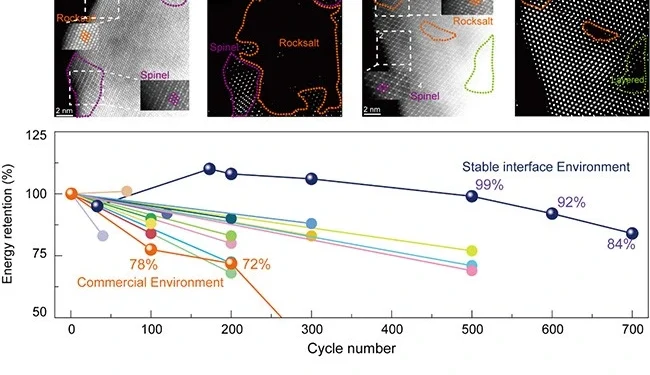According to Postech, a research team from the Graduate Institute of Ferrous & Eco Materials Technology at POSTECH has developed an innovative electrolyte strategy that significantly enhances the durability of lithium-rich layered oxide (LLO) materials. This breakthrough has enabled lithium-ion batteries to achieve an energy retention rate of 84.3% after 700 charge-discharge cycles, far surpassing the performance of conventional electrolytes.
Lithium-ion batteries are at the core of modern energy systems, with the performance of cathode materials directly impacting their energy density and lifespan. Lithium-rich layered oxides stand out for their low nickel and cobalt content, high lithium and manganese composition, and ability to deliver 20% higher energy density compared to traditional nickel-based cathodes. Additionally, they offer lower costs and are more environmentally friendly. However, LLO materials face challenges such as capacity degradation and voltage drops during charge-discharge cycles. The primary cause is believed to be the structural instability of the cathode due to oxygen release.
Professor Jihyun Hong, the lead researcher, commented, “Using synchrotron radiation, we were able to analyze the chemical and structural differences between the surface and interior of the cathode particles. This revealed that the stability of the cathode surface is crucial for the overall structural integrity of the material and its performance. We believe this research will provide new directions for developing next-generation cathode materials.” Published in the prestigious journal Energy & Environmental Science, this research offers valuable insights into the advancement of battery technologies for applications such as electric vehicles (EVs) and energy storage systems (ESS).
Read our latest news on batteriesdaily.
Reference: Lim G, Cho MK, Choi J, et al. Decoupling capacity fade and voltage decay of Li-rich Mn-rich cathodes by tailoring surface reconstruction pathways. Energy Environ Sci. 2024;17(24):9623-9634. doi: 10.1039/D4EE02329C











